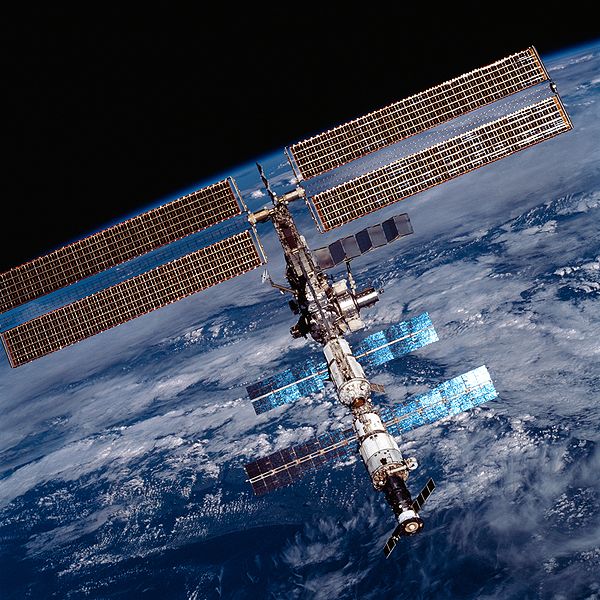Sunday, November 15, 2009
The Power Supply of International Space Station
The source of electrical power for the ISS is the Sun, with sunlight being converted into electricity through the use of solar arrays. The Russian segment of the station uses 28 volts DC (partly provided by four solar arrays mounted directly to Zarya and Zvezda), as does the space shuttle, but in the remainder of the station, electricity provided by the US solar arrays is distributed at a voltage ranging from 130 to 180 volts DC. These arrays are arranged as four pairs of wings, and each pair is capable of generating nearly 32.8 kW of DC power.
Power is stabilised and distributed at 160 volts DC before being converted to the user-required 124 volts DC. This high-voltage distribution allows the use of electrical cables with a smaller diameter, thus reducing weight. Power can be shared between the two segments of the station using converters. This feature has become essential since the cancellation of the Russian Science Power Platform because the Russian Orbital Segment now depends on the US-built solar arrays for power.
The US solar arrays normally track the Sun to maximise the amount of solar power. Each array is about 375 m2 (450 yd2) in area and 58 metres (190 ft) long. In the complete configuration, the solar arrays track the sun in each orbit by rotating the alpha gimbal, while the beta gimbal adjusts for the angle of the sun from the orbital plane. Until the main truss structure arrived, the arrays were in a temporary position perpendicular to the final orientation. In this configuration, the beta gimbal was used for the main solar tracking. Another tracking option, the Night Glider mode, can be used to reduce the effects of drag produced by the tenuous upper atmosphere, through which the station flies, by orienting the solar arrays edgewise to the velocity vector.
Source: Wikipedia
Subscribe to:
Post Comments (Atom)

No comments:
Post a Comment